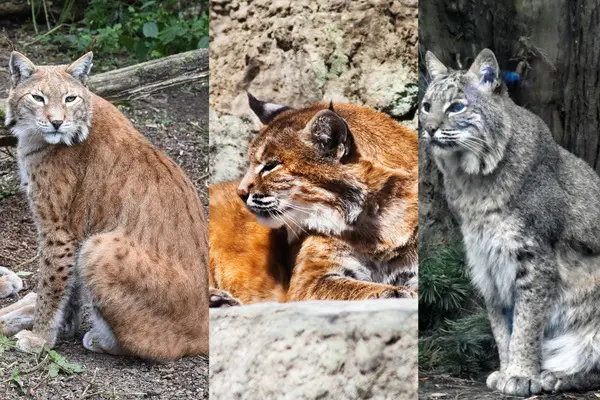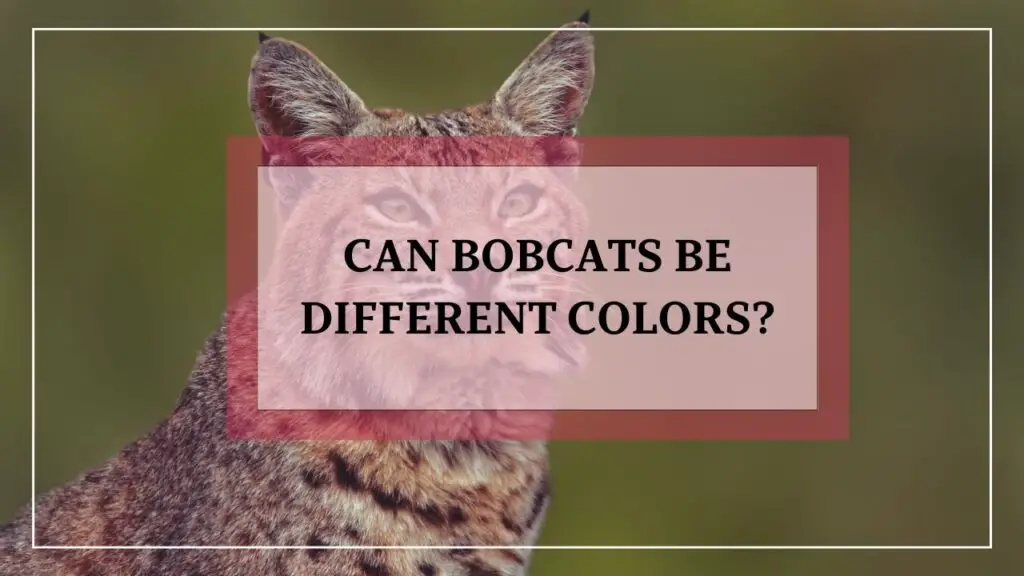Bobcats are fascinating creatures that belong to the Felidae family and are widely distributed across North America. They are known for their distinctive appearance, including their short, stubby tails and large, pointed ears. While the typical coloring of a bobcat is brown or tan, many people are surprised to learn that these animals can actually come in a range of different colors and patterns.
In this blog post, we will explore the variations in bobcat coat color, the factors that affect these changes, and why understanding these differences is important. So, if you’re curious about the world of bobcats and the different colors they can be, keep reading!
Bobcats can have variations in fur color, ranging from reddish-brown to greyish-brown to nearly black. Their fur may also be marked with black spots or stripes, giving them a distinctive appearance.
Bobcats living in different regions may also display variations in fur color due to adaptation to their environment. For example, bobcats in more northern regions may have thicker and grayer fur, while those in southern regions may have lighter reddish-brown fur. This variation in color is thought to help the cats blend into their surroundings and avoid detection by predators or prey.
In addition to regional variations, bobcats may also have individual variations in fur color. Some may have black spots or stripes marking their fur, while others may have a more uniform color. Some may have a lighter underbelly compared to the rest of their body, while others may have a more consistent coloration.
Let’s head to a general overview of the most popular colors of Bobcats:
Overview of Bobcat Coat Color Variations

Bobcats are known for their distinctive appearance and distinctive color patterns. These patterns can range from brown or tan to gray, red or orange, and even black. While some people believe that bobcats only come in one color, the truth is that there are a variety of color variations in this species. Here are some of the most common colors In Bobcats:
1. Brown Or Tan Bobcats
The most common coat color for bobcats is brown or tan. This coloration provides excellent camouflage and allows the cats to blend in with their surroundings. This coloring is also the most commonly seen in the wild and is typically seen in populations that live in areas with forested or wooded environments.
2. Gray Bobcats
Gray bobcats are relatively rare, but they do exist. This coloring is more commonly seen in populations that live in arid or desert regions, where the lighter coat helps the cats stay cool and avoid overheating.
3. Red Or Orange Bobcats
Red or orange bobcats are also relatively rare, but they are still seen in the wild. This coloring is more commonly seen in populations that live in warmer climates and is thought to help the cats stay cool by reflecting sunlight.
4. Black Bobcats
Black bobcats are the rarest of all color variations and are thought to be the result of a genetic mutation. These cats have a solid black coat and are most commonly seen in populations that live in dense, forested environments. Despite their rarity, black bobcats are still protected and considered a valuable part of the species.
What Are The Factors That Affect Bobcat Coat Colour?
There are several factors that contribute to how a bobcat should look. These 5 are the most important of them:
1. Genetics
Genetics plays a key role in determining the color and pattern of a bobcat’s coat. The color and pattern of a bobcat’s coat are determined by the genetic information passed down from its parents. Some color variations, such as the black bobcat, are believed to be the result of a genetic mutation.
2. Geographical Location
The geographical location of a bobcat population can also play a role in determining the color and pattern of the cats’ coats. For example, populations that live in forested environments are more likely to have brown or tan coats, while populations that live in arid or desert regions are more likely to have lighter gray coats.
3. Seasonal Changes
The time of year can also have an impact on a bobcat’s coat color. During the winter months, bobcats’ coats may become thicker and denser, causing a change in their overall appearance. Additionally, some populations of bobcats are known to change their coat color seasonally, becoming lighter or darker depending on the time of year.
4. Age
The age of a bobcat can also play a role in determining its coat color. For example, kittens are often born with a lighter, grayer coat, which gradually darkens as they age. This change in color is thought to be a result of hormonal changes as the kittens mature.
5. Diet
Diet can also have an impact on the coat color of bobcats. Bobcats are omnivores, meaning they eat both plants and animals. The nutrients they get from their diet can play a role in determining the color and health of their coat.
For example, a diet that is rich in vitamins and minerals can help maintain the health of a bobcat’s coat, making it appear shiny and full. On the other hand, a poor diet can result in a dull and patchy coat, which can make the cat more visible to predators.
In addition, the type of food a bobcat eats can also have an impact on its coat color. For example, eating a diet that is high in carotenoids, a type of pigment found in plants, can result in a reddish or orange tint in the fur. This is because the carotenoids are deposited in the fur, causing a change in color.
FAQs
Are Blue Bobcats Rare?
Blue Bobcats are not naturally occurring and likely refer to a morph or genetic variation of a domestic Bobcat hybrid. These types of variations are often bred for their unique appearance and can be rare and expensive.
Do Bobcats Camouflage?
Bobcats have fur that is typically a reddish-brown color with black spots and streaks, which helps them blend into their surroundings. This is an important adaptation for a predator, as it allows them to remain hidden from their prey. The fur of bobcats also changes with the season, becoming lighter in the summer and darker in the winter, further helping them to blend into their environment.
Are Black Bobcats Dangerous?
Bobcats are not typically dangerous to humans but they are wild animals and should be respected. They are opportunistic hunters, preying on small mammals, birds, and reptiles. In rare cases, they may attack domestic animals, especially if food is scarce. However, bobcats usually shy away from human contact and will avoid confrontation. It is important to keep a safe distance from bobcats and never approach them, especially if you see signs of aggression.[1]
Do Bobcats Change Color?
Bobcats do not change color in the sense that their fur does not change from one color to another. However, their fur can appear to change color as a result of changes in the environment. For example, their fur may appear lighter in the summer due to exposure to the sun, and darker in the winter due to the accumulation of dirt and debris. Additionally, some individuals may have variations in their fur color, with some being lighter or darker than others, but this is not a change that occurs over time.
Are Black Bobcats Rare?
Black fur in bobcats is a genetic variation that is relatively rare, estimated to occur in around 1% of the population. This variation is caused by a mutation in the gene that determines fur color. While black bobcats are rare, they are not unique to any particular geographic region and can be found in all areas where bobcats are native.
Can A Bobcat Be Orange?
Bobcats are not naturally orange. They have a fur coat that ranges in color from reddish-brown to grayish-brown, with black streaks or spots. Any variation in fur color, including an orange color, is not natural and is likely the result of a genetic mutation or hybridization with another species.
Can A Bobcat Be Gray?
Yes, bobcats can have gray fur. Their fur color can range from reddish-brown to grayish-brown, with black streaks or spots. This variation in fur color is a natural occurrence and is not the result of a genetic mutation or hybridization with another species. The exact shade of gray may vary depending on the individual and the environment, but gray fur is not uncommon in bobcats.

